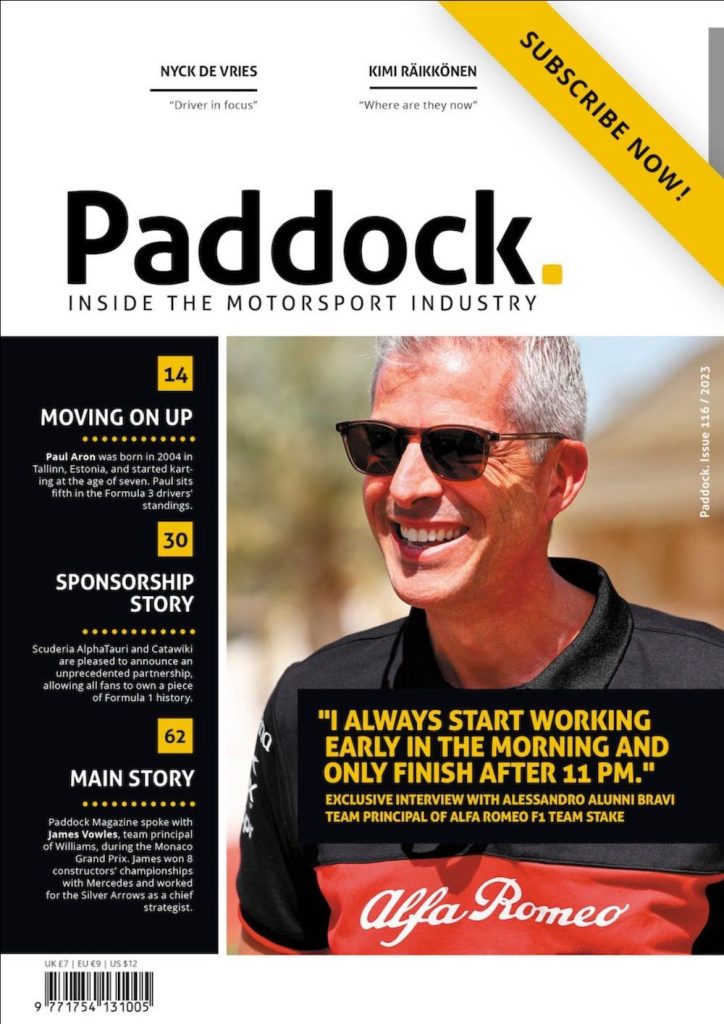With rule changes for the Super License 2016 onwards, a debate over talent versus money, and a huge talent pool in Europe and elsewhere, the route to Formula 1 is only getting tougher for young aspiring drivers worldwide.
Click here to subscribe to our print edition!
The controversial entry of 17-year-old Max Verstappen into Formula 1 has thrown up a lot of questions regarding the route and qualifications for Formula 1, and it resulted in a reviewing of the Super License rules. Former driver Jos Verstappen’s son secured his drive with the Formula 1 team Toro Rosso after just one season in single-seaters, making him the youngest driver ever in the history of this sport.
Until recently, a driver had to get certain kilometres of mileage on a Formula 1 car to qualify for a Super License, whereas now a points system has been introduced. The points system means drivers will have to be of age 18 and above, and gather a minimum of 40 points in the preceding three years by competing in series approved by the FIA.
Even at the highest levels of motorsport talent still lags behind funding in the pecking order.
The categorization has itself been controversial. The series qualifying for points includes the WEC (LMP1 only), IndyCar, FIA F3, GP2 and GP3, World series by Renault, the various Renault 2.0 series, and the FIA F4. But the quantity of points is skewed in favour of FIA-approved series, with the entry-level National F4 Championships being rated higher than the Formula Renault Eurocup. The famous touring car DTM Championship, from which many drivers have graduated to Formula 1, will also not qualify.
Engine maker Renault, which runs the maximum number of junior single-seater series appealed to the FIA to reconsider or ease the regulations. The only relief in the statement was that they might revise and reconsider a few things further before the 2016 season, and in certain scenarios, the World Motorsport Council will review exceptions if required. There is much merit in the Renault argument, as the Formula 3.5 World Series and 2.0 Eurocup titles are rated highly in professional circles.
Had such a point system existed earlier, most drivers on the current grid, such as Sebastian Vettel, Daniel Ricciardo, Max Verstappen, Jenson Button and Kimi Raikkonen, would have had to wait much longer to reach Formula 1. And, Michael Schumacher would not have been able to make his comeback as he had not driven for the preceding 3 years.
Obviously, while conceding there was a need to have a qualifying system in place for F1 licences, it seems to have been put together in a hurry and has flaws that need to be addressed very soon. For example, instead of awarding points based on the top 10 positions, perhaps it would have been smarter to club P1-P5, P6-P10, and so on. This would help talented drivers with limited budgets, mediocre teams, and other obstacles that hide their true potential.
The object, after all, is to ensure the driver has the experience and the necessary skills. The finishing position is not necessarily a reflection of the superiority of the drivers, otherwise, there is no way drivers and team owners would have voted Fernando Alonso as the best driver for the last few years. Under the present scoring, only drivers with the best teams and the biggest budgets would be winning regularly to gather the required points in a realistic time frame. But what about equally talented drivers who might not have equal equipment due to various constraints? Thus, there is a strong case for clubbing of championship standings. And this is just one point that comes to mind.
The other hurdle in the path for young drivers has been the talent-versus-money angle in the sport. Many drivers have had to let go of their Formula 1 plans despite winning championships in the junior levels purely on grounds of inadequate funding at the higher levels.
Perhaps one of the flaws that the points system has addressed is making it difficult for a driver with no talent but enough funds to jump directly into Formula 1. But this still does not prevent such drivers from occupying prime seats at the junior levels and block the path of more deserving talent.
Carmen Jorda, a recent appointment as a development driver for Lotus F1 brings out perhaps the most glaring examples of funding and marketability overriding talent and experience. Consider the case of Nico Hulkenberg, a driver who has won every championship, every title from Formula BMW to GP2, but still struggles to secure a drive with a winning team. Even at the highest levels of motorsport talent still lags behind funding in the pecking order.
In this new process of streamlining the path to Formula 1, young drivers will have to give priority to series which secure points for the Super License. It remains to be seen how this will affect the popularity of other competitive single-seater or prototype series which do not qualify for these points but still serve as a training ground for nurturing talent.
With the exception of IndyCar, all the FIA-approved series are based in Europe, which has resulted in the point system favouring European championships. Series like Indy Lights and Japanese Super Formula are amongst those which haven’t been included in the list.
As far as the FIA goes, they will have to reconsider the qualifying championships somewhere down the line, as there were enough factors affecting driver careers already and this will only impact their careers more.
Driver trends recently have indicated an earlier career shift to Endurance racing, GTs, DTM, and Super V8s, which give the driver a longer racing career and opportunity to be paid for racing. Perhaps the new points system will only accelerate this trend.






Related Articles